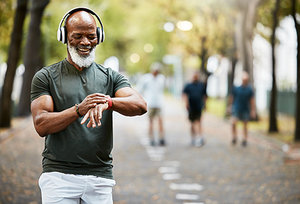The Best and Worst Time
By Editorial Staff
To do what? We're talking about when to exercise during pollen season, which generally begins between January and April, depending on the climate and where you live. That means before you know it, pollen could be adversely affecting your health, especially if you have a pollen allergy. Let's get a jump on pollen season by understanding how exercise – specifically
when you exercise – can influence whether your cruise through pollen season or take a big hit.
Researchers evaluating pollen measurements throughout the day discovered the lowest pollen levels are between 4 a.m. and noon, while the highest levels occur from 2 p.m. to 9 p.m. That means if you exercise in the morning, you're less likely to feel the effects of pollen compared to if you exercise later in the day. Findings appear in the Annals of Allergy, Asthma & Immunology.
 If you're thinking, I'll just exercise indoors and avoid the health impact of pollen, think again. While pollen is certainly present in higher amounts outdoors, it's not that difficult for pollen to migrate indoors through doors, windows and other areas of your home that may not be adequately sealed. And whether you're using a furnace for the cold or an air conditioner for the heat, that pollen will eventually migrate throughout your home via your air ducts.
If you're thinking, I'll just exercise indoors and avoid the health impact of pollen, think again. While pollen is certainly present in higher amounts outdoors, it's not that difficult for pollen to migrate indoors through doors, windows and other areas of your home that may not be adequately sealed. And whether you're using a furnace for the cold or an air conditioner for the heat, that pollen will eventually migrate throughout your home via your air ducts.
So take this research to heart this and every pollen season: Exercise before noon whenever possible. There's an added benefit, too: You'll get your exercise done for the day and be able to rest easy, knowing you're getting fit and avoiding the perils of pollen.

